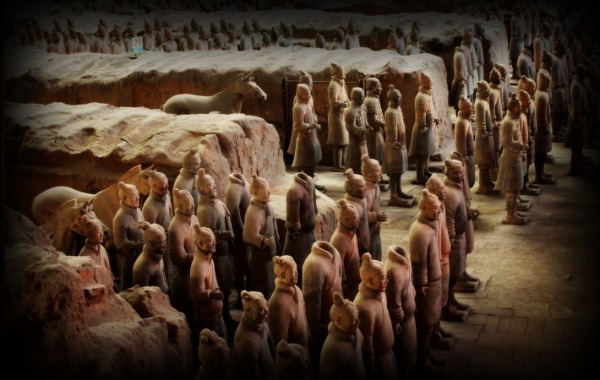Emperor Qinshihuang’s Mausoleum Site Museum

Emperor Qinshihuang’s Mausoleum Site Museum
秦始皇帝陵博物院
Address: North Qinling Road, Lintong district, Xi'an, Shaanxi province
Website: bmy.com.cn
Hours:8:30-18:30, 16 March - 15 November
8:30-18:00, 16 November - 15 March
Ticket booking: order.bmy.com.cn:88/ticket/index.htm
General admission: 120 yuan ( Foreigners' are required to present passports when buying tickets and entering the museum )

[Photo/ bmy.com.cn]
Buried deep under a hill in central China, surrounded by an underground moat, an emperor has lain undisturbed for more than two millennia. He is China's first emperor, Qin Shi Huang, who died in 210 BC after conquering six warring states to create the first unified nation of China. Wanting protection in the afterlife, Emperor Qin created an army of 8,000 soldiers, 130 chariots with 520 horses, and 150 cavalry horses made of terracotta.
In 1974, some farmers happened to dig up what turned out to be a large-scale pit with terracotta soldiers and horses, belonging to the Emperor Qin. After 2,200 years, the Emperor's tremendous army stood as though living again. The life-size terracotta solider they dug out of the ground turned out to be just one of an army of thousands, each utterly unique, with individual clothing, hair and facial features.
With an area of 226 hectares, the Emperor Qinshihuang's Mausoleum Site Museum was opened to the public on October 1, 2010. The site area includes the Museum of Terracotta Warriors and Horses and the Qin Shi Huang's Mausoleum Site Park (Lishan Garden). The Museum of Terracotta Warriors and Horses is divided into three major sections, Pit 1, Pit 2, and Pit 3, named in order of their discovery. Over 7,000 pottery soldiers, horses, Chariots and weapons have been discovered in the excavations and are displayed in the museum. Other attractions within the site park include the Museum of Terracotta Acrobatics, the Museum of Terracotta Civil Officials and the Museum of Stone Armor, which are a part of Lishan Garden.
Last Updated: Dec 07, 2018




